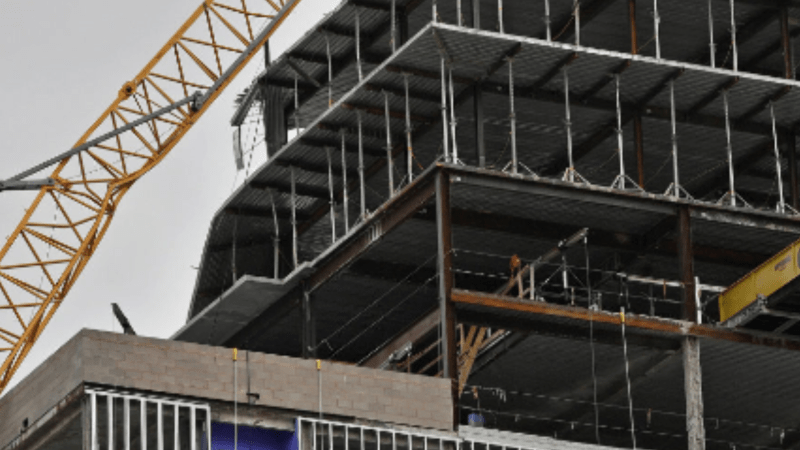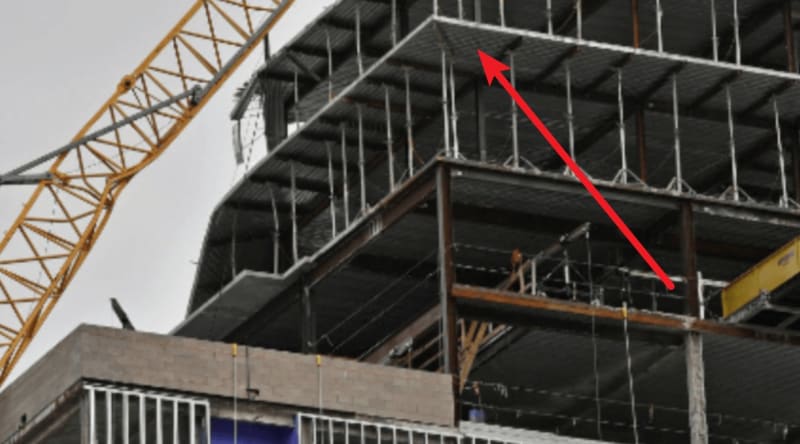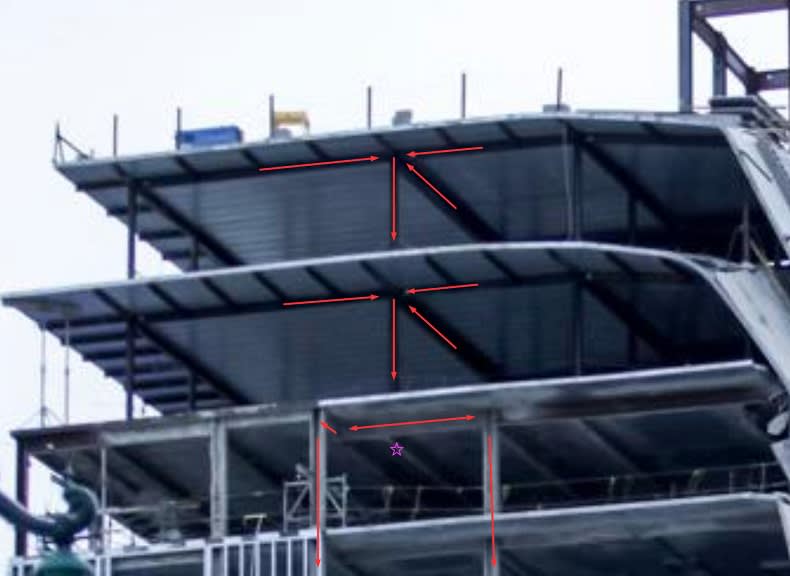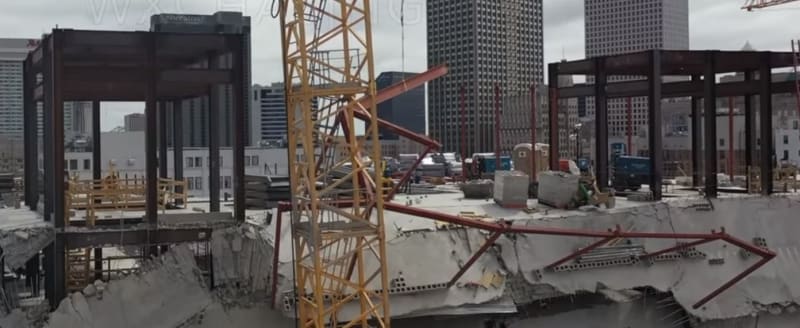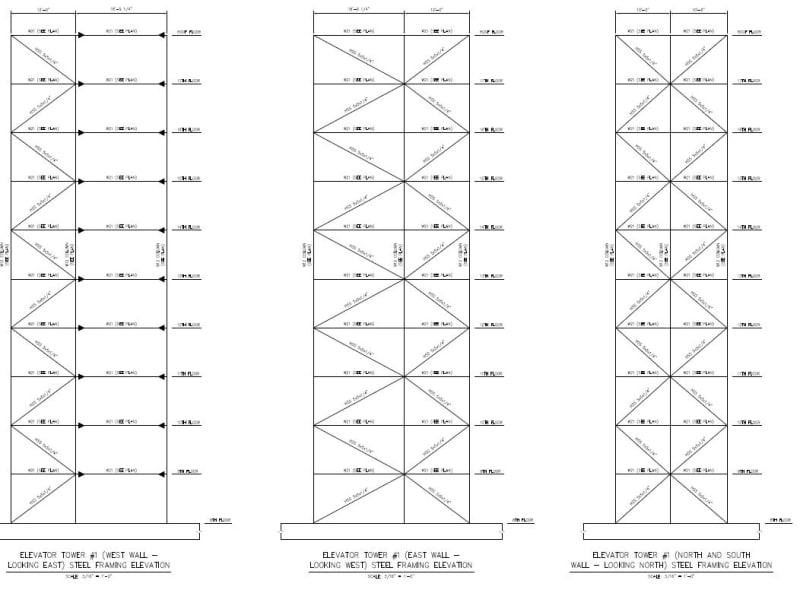After looking over the plans (which I lost and can’t find now) if I may offer a few observations:
1. The tubes attached to the spandrel beams are structural as demonstrated by the orthogonal deck span that changed directions in the cantilever.
2. The beam supporting the cantilever would be in torsion unless it is tied back by the back span reinforcing.
3. I see no serious back span top steel steel the back span in close ups posted at the failure (such as with the man in the yellow suit)
4. I see that the cantilever steel is in the second layer of steel in the failure area if the steel exists.
5. The effective depth of the cantilever steel, if existent, is about only an inch or so in the failure area which further illustrates the structural nature of the HSS sections.
6. Since the outer slab cannot function as a cantilever, its load would be taken to the cantilever beams, then to the shores.
7. I propose that the shores may not have been removed after pouring each slab, therefore leaving the load in the shore rather than transferring it to HSS sections.
8. The shores finally buckled due to over-load of carrying multiple floors and the collapse proceeded.
9. Could it be that the HSS tubes were to connect to something else at their cantilever end to support them and "make it good" and were to be shored until that time?
Regards to all.

